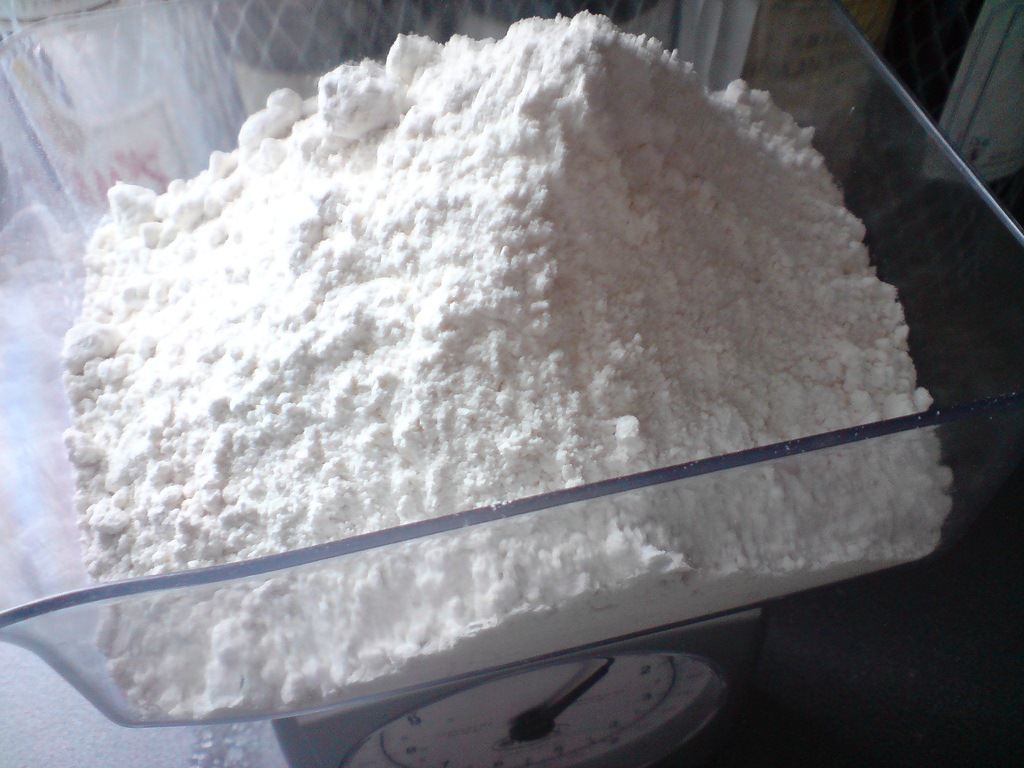Instead of going to the store and purchasing flour, you can use these plants as the most natural and inexpensive way to make your own. Each of these flour alternatives uses different parts of the plant and you can use an item as simple as a mortar and pestle to form the flour. It’s even recommended to combine a couple of these plants to create a larger quantity of flour.
Amaranth
This is considered a weed in North America and few people know it’s actually an edible plant. See the distribution map here.
Amaranth grains are rich in amino acids and high in proteins. The Aztecs used it as a staple food. To make Amaranth flour one needs to harvest the seeds in the fall and let them dry out for a day or two in a sunny spot. You can grind the seeds using a mortar and pestle or a food processor.
Rye Grass
Rye grass is considered tall grass and can grow up to 4 feet high. The grass should be harvested in the fall when the grasses turn brown. Check out the distribution map here.
The seed heads must be separated from the grass and you can use a stick to beaten the seeds heads over a bucket or basket. Once you separate the seeds, crush them by hand.
Chenopodium
This is another staple food of the first pioneers. It is originally known as goosefoot and the seeds it produces are called quinoa. The seeds should be harvested in the fall. Check out the distribution map here.
To make flour from quinoa the seeds require soaking as they are high in saponins. Soak the seeds overnight and rinse well to remove saponins on surface. The seeds can be used similar to rice and they are known to require twice as much water as grains when cooking.
Cockspur Grass
Also known as barnyard grass, this plant was used as a staple grain. It is considered one of the world’s worst weeds since it affects crop yields by reducing soil nitrogen. Check out the distribution map here. The seeds can be roasted, boiled or ground into flour. Some survivalists use the seeds to make a caffeine-less coffee substitute.
The Native Americans used to pound the seeds and ground them to make a meal and mush out of them. It was the preferred side dish for fish meals. Harvest the seeds in fall.
Cattail
This is the preferred plants of many survivalists. Check out the distribution map here.
To make cattail flour you need to pull the entire plant with the root. Ditch the stalks and keep the roots. Wash the roots and peel them thoroughly. Place the roots into a bucket of water and start to break them. To extract the flour you need to separate it from the fibers. As you break the roots the flour will settle at the bottom of the bucket. Pour out the excess water and strain the remaining mush. Let it dry in the sun to obtain the flour.
Acorns
Native Americans sometimes collected enough acorns to store for two years as insurance against poor acorn production years.
To make acorn flour you first have to get rid of their tannins content which gives acorns a very astringent taste. Start by removing the shells and crush the acorns with a rock or an axe. Place the crushed acorns in a bowl of water. You will notice that the meat will sink. Toss the shells. Boil the batch of meat until the water becomes brown. Place the batch in a second pot of boiling water and repeat the process until the water will remain clean.
After removing the tannins use your mortar and pestle to grind the meat into flour.
Have you tried using any of these plants as flour? Are there any others we should add to the list?
Article Source: Prepper's Will

Leah Kay Fidas
Cattail actually works I have used it
Louis
I knew a couple an cattails is one of them .
I make acorn flour. It’s been a while so I need to make it again.
Alicia Plummer
Lots of hard work! I made muffins from acorns they tasted fine, but it took a really long time to do all the steps. Took longer than I thought it would to find enough good acorns!